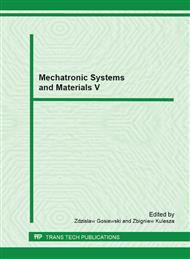p.326
p.332
p.338
p.344
p.350
p.356
p.365
p.371
p.379
The Digital Pre-Operative Planning of Hip Surgical Interventions
Abstract:
Computer technology has many applications in different fields of industry, health care and medicine. This encompasses paper-based information processing as well as data processing machines (Hospital information system or Clinical information system) and image digitalization of a large variety of medical diagnostic equipment (e.g. computer images of X-ray, MR, CT). The aim of the computer technology in medicine is to achieve the best possible support of patient care, preoperative surgery planning and administration by electronic data processing. At the present time in many countries of the worlds preoperative planning of interventions for lumbar joint is realized with caliper, protractor, plastic templates and x-ray images. Orthopaedic surgeons use transparent template radiographs as part of pre-operative planning in order to gauge the suitability and correct size of an implant. The newly developed CoXaM software offers a simple solution of the problems by using the digital x-ray images and handmade transparent plastic templates. The CoXaM software was developed in Visual Studio 2005 in the Visual C++ programming language at the Department of Biomedical Engineering and Measurement at the Faculty of Mechanical Engineering, Technical University of Kosice. The software was designed for pre-operative planning and helps to determine on the X-ray image a length dimensions, a center of rotation, an angle values. It enables the digitalization of plastic templates from several producers, which will assess the suitability of the type of implant.
Info:
Periodical:
Pages:
350-355
Citation:
Online since:
March 2013
Authors:
Keywords:
Price:
Сopyright:
© 2013 Trans Tech Publications Ltd. All Rights Reserved
Share:
Citation:


